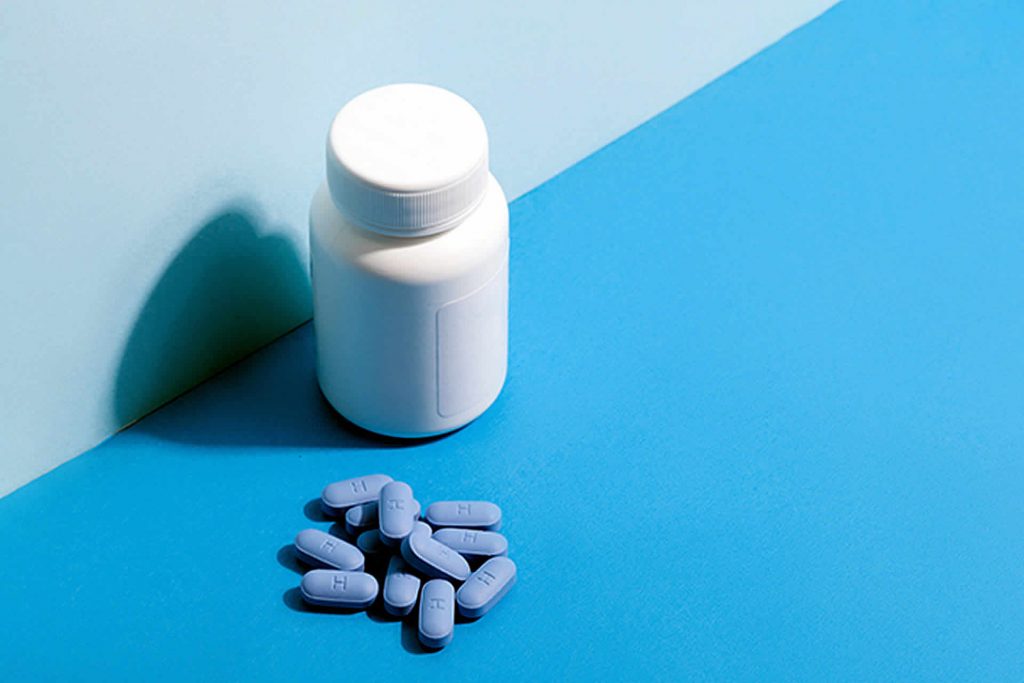
PrEP/PEP
Oral PrEP maybe confused for oral PEP by some people, but they are not the same;
Differences
- While oral PrEP is taken before being exposed to HIV, oral PEP is taken after potential exposure to HIV source
- Oral PrEP is taken as long as the person is at substantial risk of contracting HIV (on-going risk), while oral PEP is taken for 28 days after a single potential exposure to HIV source.
Similarities
- Both are ARVs and only taken by HIV negative persons
- Both are taken daily and as prescribed by a PrEP/PEP provider
- Both PrEP and PEP use require strict adherence for their effectiveness (efficacy)
What is Oral PrEP?
Oral PrEP of HIV is the use of antiretroviral (ARV) drugs by people who are not infected with HIV to block the acquisition of HIV. The World Health Organization (WHO) and the Ministry of Health recommend PrEP for persons who are at substantial risk of HIV infection.
When is a Person Considered to be at Substantial Risk of HIV Infection?
A person is said to be at substantial risk of HIV if he/she has engaged/engages in any of the following:
- Shares injection materials (syringes and needles) with another person.
- Engages in sexual activity in the last 3 months with a partner who is HIV positive and has not been on effective HIV treatment.
- Currently has or had an STI (s) after (STI screening, self-report, or by a lab test).
- Engages in vaginal or anal sex without a condom with more than one partner.
- Who expects to have a condom burst during sex.
- Engages in sex when ‘high’ (under the influence of substances like alcohol, tramadol, cocaine, Igboh)
What We Know about PrEP:
- PrEP can be used by ONLY HIV uninfected persons to reduce the risk of HIV acquisition.
- PrEP should be taken as an additional prevention intervention. This means using PrEP alongside other prevention methods, like condom use.
- PrEP is effective if taken correctly and consistently (adherence). This means taking PrEP as prescribed
- PrEP is safe and has minimal side effects like other drugs.
- PrEP should be prescribed by a healthcare provider after an individual is confirmed to be eligible.
Eligibility for PrEP Use
For one to be eligible for PrEP, the person must;
- Be HIV negative
- Have no suspicion of acute HIV infection
- Have no protein molecules in its urine (this means the kidneys are healthy enough)
- Be willing to take PrEP as prescribed
- Be at substantial risk of HIV infection
How Effective is PrEP in Preventing HIV?
- PrEP is effective in preventing HIV infection when taken as prescribed (adherence)
Adherence to drugs means that an individual is taking prescribed medications correctly and consistently. It involves taking the correct drug:
- In the correct dose,
- At a consistent frequency (number of times per day), and
- At a consistent time of day.
Can an Individual Discontinue PrEP Use?
PrEP can be discontinued if the individual:
- Acquires HIV infection (if one becomes HIV positive).
- is no longer at substantial risk for HIV infection.
Where Can PrEP be Accessed?
- PrEP service is available in pharmacies, community health centers, and sometimes issued free to individuals.
- You can also access HIVST kits at Heartland Alliance-managed (OSS) and other public and private healthcare centres. Chat us for linkage to the centres
POST-EXPOSURE PROPHYLAXIS (PEP)
What is PEP?
PEP stands for post-exposure prophylaxis. It means taking antiretroviral medicines to prevent HIV infection after a possible exposure to the virus. PEP is used only in emergencies and must be started within 72 hours (3 days) after recent possible exposure to HIV. PEP is taken by ONLY HIV-negative persons.
How Do I Know If I Need PEP?
- If sexually assaulted (raped), and you do not know the HIV status of the rapist or if the rapist is HIV positive
- If one has a condom break during sex and does not know the HIV status of the partner, or the partner is HIV positive
- When one shares needles or other equipment used to inject drugs with persons of unknown HIV status
- A person who accidentally got pricked with a needle while at work, such as a healthcare worker
How Well Does PEP Work?
- PEP is effective in preventing HIV infection when it’s taken correctly. This means taking the right drug, at the right time and the right dose.
- The sooner a person starts PEP use after a possible HIV exposure, the better the effectiveness.
- While taking PEP, it’s important to use other HIV prevention methods, such as condoms every time you have sex, and use only new, sterile needles when injecting drugs.
NOTE
- PEP is only for emergency purposes; it is given after a possible exposure to HIV and is not a substitute for regular use of other HIV prevention. It is not the right choice for people who may be exposed to potential HIV sources frequently.
- PEP is unlikely to be effective in people who have been exposed more than 72 hours before seeking medical assistance.
How to Access PEP
- Contact your health care provider IMMEDIATELY after the exposure. Your health care provider will check you to decide whether PEP is right for you. He will also work with you to determine the medicines that you should take for PEP.
- You can also access PEP service at Heartland Alliance-managed OSS. Chat us for linkage to the OSS


